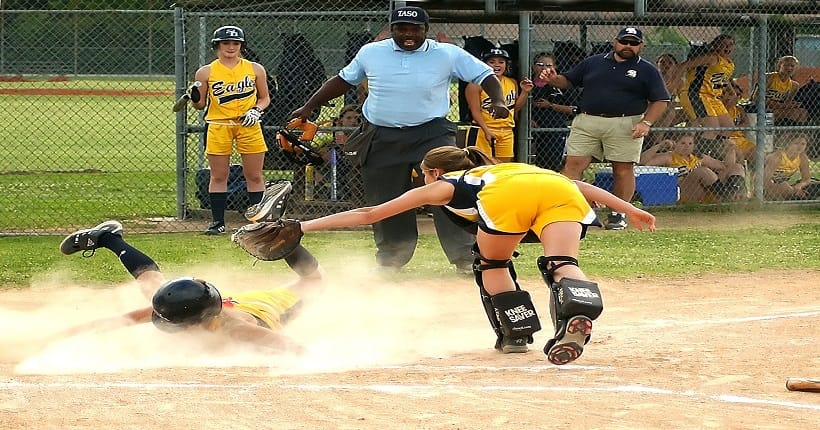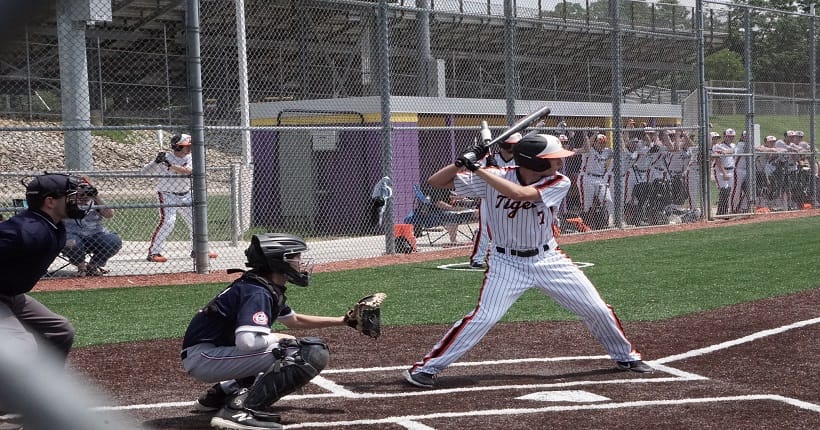What Is Halo In Baseball?
Halo in baseball refers to a bright circle or ring around the sun or moon during a game. Halo in baseball is a unique phenomenon where a bright circle or ring appears around the sun or moon during a game.
It often intrigues players, fans, and even the broadcast audience. This natural optical phenomenon occurs when light is refracted or bent as it passes through ice crystals in the atmosphere. The ice crystals act as tiny prisms, bending the light and creating the halo effect.
While it may not directly impact the gameplay, it adds an extra element of awe and wonder to the baseball experience. Whether it’s seen as a good luck sign or simply a beautiful spectacle, the halo in baseball is a captivating sight that’s worth noticing during a game.
The Halo Effect
Definition and Origins of the Halo Effect
The Halo Effect is a cognitive bias that refers to the tendency of individuals to perceive someone or something positively based on a single positive trait or characteristic. This bias often leads to an overall positive impression, even if other aspects of the individual or object are not necessarily positive.
This psychological phenomenon has its roots in psychophysics and was first described by psychologist Edward Thorndike in the early 1900s. Thorndike observed that individuals tend to judge others based on their overall impression, rather than evaluating specific traits or characteristics separately.
Exploring the Psychology Behind the Halo Effect in Baseball
In the context of baseball, the Halo Effect can have a significant impact on how players are perceived and evaluated. When a player excels in one aspect of the game, such as hitting or fielding, it often leads to a positive perception of their overall playing abilities.
This psychological bias can influence coaches, scouts, and fans, who may overlook other deficiencies or weaknesses in a player’s performance. For example, a player who consistently hits home runs may be seen as an exceptional player, even if they struggle with other aspects of the game, such as base running or fielding.
The Halo Effect can also extend to a player’s reputation and marketability. When a player gains a positive reputation for their skills or achievements, it can lead to increased recognition, endorsement opportunities, and fan support.
How the Halo Effect Influences Perception and Performance
The Halo Effect in baseball influences both perception and performance in several ways. Firstly, it can create high expectations for players who have been positively evaluated based on a single outstanding skill. These expectations can put added pressure on the player, affecting their performance and potentially leading to a decline in overall productivity.
Moreover, the Halo Effect can also impact perception of other players on the same team or in the same position. If one player is highly regarded due to a single strength, it can overshadow the skills and contributions of other players who may be equally or more talented in different areas.
| Perception | Performance |
|---|---|
|
|
It is important to note that the Halo Effect is a cognitive bias and can lead to inaccurate evaluations and perceptions. To ensure a more comprehensive and objective assessment of players, coaches, scouts, and fans should consider a player’s performance across multiple dimensions, rather than solely relying on a single outstanding trait.
The Halo Effect In Baseball
Baseball is not only a game of skill and strategy but also a sport influenced by perception and bias. One such cognitive bias that affects player evaluation, contract negotiations, and talent scouting in baseball is known as the Halo Effect.
The Halo Effect and player evaluation
Player evaluation in baseball is greatly influenced by the Halo Effect. When a player is highly regarded for a particular skill or attribute, it tends to overshadow their overall performance. For example, if a player is known for their exceptional hitting ability, it may lead scouts and evaluators to overlook their defensive shortcomings or lower batting average. This biased evaluation can impact player rankings and overall assessments.
How a player’s reputational halo impacts contract negotiations and salaries
The Halo Effect also plays a significant role in contract negotiations and salaries. When a player has established a stellar reputation, their perceived value increases in the eyes of team owners and general managers. This reputation can lead to higher contract offers and salaries, even if their recent performance does not fully justify it. Teams may be willing to invest more in a player based on their previous achievements, anticipating a continued level of success.
The role of the Halo Effect in selecting All-Star players
The Halo Effect heavily influences the selection of All-Star players. Players who have gained popularity and recognition are often favored by fans and coaches, leading to their inclusion in All-Star teams. This can sometimes result in deserving players being overlooked because they lack the same level of name recognition or reputation, despite their outstanding performance throughout the season.
The Halo Effect and scouting talent
Scouting talent in baseball is susceptible to the effects of the Halo Effect. When scouts focus too much on a player’s reputation or prior successes, they may overlook hidden gems who have not yet gained widespread recognition. This can lead to missed opportunities for teams to unearth talented players who may not have benefited from the same halo of prestige.
How the Halo Effect can skew scouting reports and player rankings
The Halo Effect can distort scouting reports and player rankings, as evaluators might overemphasize a player’s positive qualities while downplaying their weaknesses. This bias can result in inflated rankings and inaccurate portrayals of a player’s true abilities. Consequently, it is crucial for scouts and talent evaluators to remain vigilant and objective, focusing on a player’s overall performance rather than being swayed by reputational halos.
Examples of players who benefit or suffer from the Halo Effect:
| Benefit from the Halo Effect | Suffer from the Halo Effect |
|---|---|
| Player A – Known for their powerful home runs, overshadowing their subpar fielding skills. | Player B – Had a remarkable early career but struggled in recent seasons, yet still receives high contract offers based on past reputation. |
| Player C – A charismatic and well-liked player favored by fans and coaches, earning All-Star selections despite slightly lower statistical performances. | Player D – A consistent performer with solid all-around skills, but overlooked for All-Star selections due to lack of media attention. |
The Halo Effect in baseball has a powerful impact on player evaluation, contract negotiations, and talent scouting. It is essential for stakeholders in the sport to recognize and mitigate these biases to ensure fair and objective assessments of players’ skills and value to the team.
Overcoming The Halo Effect
Strategies for mitigating the impact of the Halo Effect
The Halo Effect is a cognitive bias that occurs when our overall impression of a person’s performance influences our judgment of their specific qualities or abilities. In baseball, this can manifest when a player’s reputation or past success clouds our objective evaluation of their current performance. Overcoming the Halo Effect is essential for accurate player assessment and informed decision-making in the world of baseball.
One of the most effective strategies for mitigating the impact of the Halo Effect is to rely on data analysis and statistical measurements. By leveraging objective metrics and analyzing performance data, teams and scouts can supplement their subjective impressions with quantifiable evidence. This allows for a more comprehensive evaluation of a player’s skills, eliminating the reliance on reputation or past achievements alone.
The importance of data analysis in evaluating player performance
Data analysis plays a crucial role in evaluating player performance in baseball. By harnessing data-driven insights, teams can make informed decisions and assessments. This approach goes beyond relying on subjective opinions or biases and instead relies on objective measurements.
When evaluating players, it is vital to assess their performance using objective metrics such as batting average, on-base percentage, slugging percentage, and fielding percentages. By analyzing these objective measurements, teams can gain a clearer picture of a player’s strengths and weaknesses.
Relying on objective measurements and statistical analysis
To overcome the Halo Effect, it is crucial to rely on objective measurements and statistical analysis in player evaluation. Objective measurements provide unbiased data that can counteract the influence of reputation or personal biases.
Objective measurements can include various statistical indicators such as WAR (Wins Above Replacement), OPS (On-base Plus Slugging), ERA (Earned Run Average), and FIP (Fielding Independent Pitching). These metrics allow teams to assess a player’s performance objectively, considering factors such as overall offensive and defensive contributions, pitching effectiveness, and other key indicators of success.
Recognizing and avoiding biases in player evaluation
To build a comprehensive and unbiased approach to player assessment, it is essential to recognize and avoid various biases that can influence our judgment. The Halo Effect is just one of many biases that can cloud our evaluation.
Other common biases associated with player evaluation in baseball include the Confirmation Bias, where we seek information that confirms our preexisting beliefs, and the Bandwagon Effect, where the popular opinion influences our judgment. Recognizing these biases and actively working to mitigate their impact is crucial for fair and accurate player evaluation.
Exploring common biases associated with the Halo Effect
The Halo Effect can give rise to several biases that impact player evaluation in baseball. One example is the Reputation Bias, which occurs when a player’s past success or reputation influences our perception of their current abilities. This bias can lead to overvaluing certain players based on their past achievements, regardless of their current performance.
Another bias associated with the Halo Effect is the Beauty Bias, where a player’s physical appearance or charismatic demeanor influences our perception of their skills. This bias can result in the overvaluation of players who possess certain attractive qualities, even if those qualities are unrelated to their actual performance on the field.
Building a more comprehensive and unbiased approach to player assessment
To overcome the biases associated with the Halo Effect and improve player assessment, it is crucial to adopt a more comprehensive and unbiased approach.
This can involve combining subjective evaluations with objective measurements and statistical analysis. By carefully considering both qualitative and quantitative factors, teams can develop a more holistic understanding of a player’s skills and potential.
Additionally, incorporating advanced analytics and objective metrics into player evaluation can provide deeper insights into performance and lead to more accurate assessments. By embracing the growing prevalence of data-driven approaches and breaking free from biases, the future of player evaluation in baseball holds the promise of enhanced decision-making and improved player development.
The future of player evaluation in baseball
The future of player evaluation in baseball lies in embracing advanced analytics and objective metrics. As technology and data continue to evolve, teams will have access to increasingly sophisticated tools for assessing player performance.
By utilizing advanced analytics, teams can gain insights that go beyond traditional statistics, uncovering hidden trends and patterns. These insights can pave the way for more precise player evaluation and informed decision-making.
However, it is vital to strike a balance between reputation and objective performance measures. While reputation provides valuable context, it should not overshadow objective metrics. By finding this equilibrium, teams can ensure fair and accurate player evaluation, ultimately leading to improved on-field performance and success.

Credit: www.cimarronsports.com
Frequently Asked Questions For What Is Halo In Baseball?
What Does Halo Mean In Baseball?
Halo in baseball refers to a bright circle around a player’s image on TV screens, caused by reflections.
What’S A Halo In Men’S Softball?
A halo in men’s softball is a fielding technique where outfielders position themselves just in front of the fence to catch fly balls. It prevents the ball from going over the fence and being scored as a home run.
What Is A Halo In Baseball?
A halo in baseball refers to a bright ring around the sun or moon that is caused by the light being refracted through ice crystals in the air. It is seen as a good omen by some players.
How Does A Halo Affect The Game?
A halo in baseball doesn’t have any direct impact on the game itself. However, some players and fans believe that seeing a halo brings good luck and can boost team morale.
Are There Any Superstitions Associated With The Halo In Baseball?
Yes, many baseball players have superstitions related to the halo. Some believe that seeing a halo means they will have a successful game, while others may view it as a sign of divine intervention.
Conclusion
Understanding the concept of halo in baseball is crucial for fans and players alike. This symbol of success, most commonly associated with batting average, represents a player’s ability to reach base and avoid getting out. By grasping the significance of the halo, baseball enthusiasts can gain deeper insights into a player’s performance and overall contribution to the team.
Being aware of this statistic adds another layer of appreciation to the game and enhances the overall enjoyment of America’s favorite pastime.







